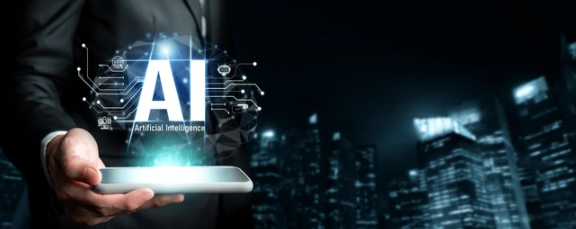
The Future of Industry: When AI and Digital Twins Work Together
In a world where technological innovation is reshaping the boundaries of industry, artificial intelligence (AI) and digital twins are emerging as indispensable catalysts. These two technologies, though still relatively recent, already demonstrate robust potential to transform industrial processes, optimize performance, and reduce costs.
At SmartShape, we have identified the unique potential of AI and digital twins to address the complex challenges faced by modern industries. But how can these two technologies work together to redefine the future of industry? This article explores their synergy and the transformations it enables.
Understanding Digital Twins and AI
A digital twin is a dynamic virtual replica of a physical object, system, or process. By integrating real-world data from sensors, CAD tools, or information systems, it enables real-time monitoring, analysis, and optimization of performance. At SmartShape, our digital twins incorporate advanced technologies such as photogrammetry, BIM, and 3D streaming to offer precise and accessible representations of complex data.
AI, on the other hand, leverages advanced algorithms to process massive volumes of data, identify patterns, and predict future events. Whether through machine learning or deep learning, AI improves decision-making processes and creates smarter, adaptive systems.
Together, these technologies form a powerful symbiosis. Digital twins provide a data-rich platform, while AI transforms this data into actionable insights. This synergy not only enhances understanding of the present but also anticipates future outcomes.
Key Applications of AI in Digital Twins
1. Predictive Maintenance
Predictive maintenance is one of the most transformed domains by the integration of AI and digital twins. By analyzing real-time data from sensors and combining it with predictive models, it becomes possible to anticipate failures before they occur. For example, in the energy sector, wind turbines equipped with AI-powered digital twins can detect subtle changes in blade vibrations, signaling imminent risks of failure.
At SmartShape, this capability is already implemented with partners like Suez, where the management of complex infrastructures such as sewer networks is optimized to reduce costs, extend equipment lifespan, and anticipate maintenance needs.
2. Process Optimization
AI, combined with a digital twin, enables the analysis of complex scenarios and the proposal of improvements to industrial processes. For instance, in manufacturing, a digital twin can simulate different production chain configurations. AI evaluates these scenarios and identifies options that minimize costs and delays while maximizing quality.
Taking it a step further, this technology can adapt processes in real time to unforeseen events. For example, in chemical industries, AI can monitor temperature or pressure variations and automatically adjust parameters to ensure product safety and quality.
3. Decision Support
AI-enhanced digital twins offer invaluable decision support. By integrating historical data and predicting future trends, they allow decision-makers to evaluate risks and opportunities. For example, in the naval sector, SmartShape collaborated with Chantiers de l’Atlantique to optimize shipbuilding processes. The platform provides real-time recommendations, reducing delays, cost overruns, and increasing operational precision.
AI-driven solutions can also uncover unexpected improvement opportunities by revealing correlations between previously isolated datasets.

Benefits for Industries
1. Cost Reduction
Integrating AI and digital twins helps reduce costs by identifying inefficiencies early and avoiding unexpected failures. This results in better resource management and significant savings on maintenance and downtime.
2. Enhanced Safety
By predicting failures and monitoring performance in real time, these technologies contribute to a safer working environment. Workers face fewer hazardous situations, and critical systems can be continuously monitored to prevent accidents.
3. Productivity Gains
Businesses can automate complex tasks and optimize performance, leading to significant productivity gains. These gains enable teams to focus on higher-value activities.
4. Improved Collaboration
Digital twins provide a “single source of truth,” facilitating collaboration between teams and stakeholders. Centralized data ensures clear and effective communication, reducing errors and misunderstandings.
The Future: AI and Digital Twins at Scale
The combined potential of AI and digital twins is only beginning to unfold. With advancements in sensor technologies, improved AI algorithms, and the rise of cloud infrastructures, the possibilities are limitless. Digital twins could evolve into interconnected ecosystems, optimizing cities, energy networks, and global supply chains.
At SmartShape, we continue to invest in these innovations to guide our clients toward a more efficient, secure, and sustainable future. The future of industry is being shaped today, and it is clear that AI and digital twins are its cornerstones.
Together, we are building the foundations of an industrial world revolutionized by technology. Are you ready to join this transformation? Contact us to discover how SmartShape can bring your industrial projects to life.
Better understand the possibilities of SmartShape?
Schedule a demo

